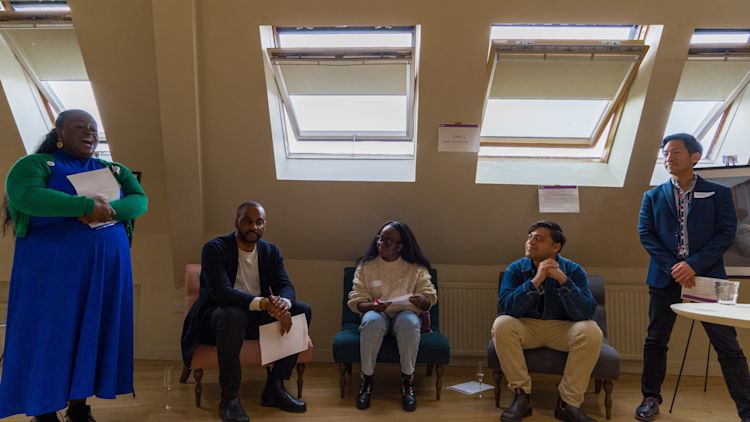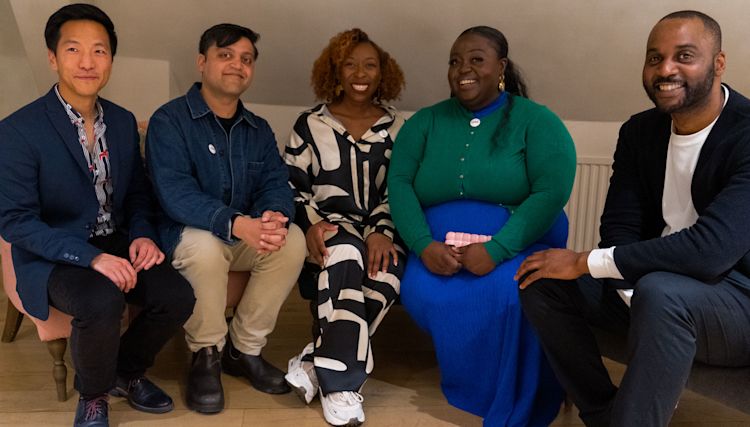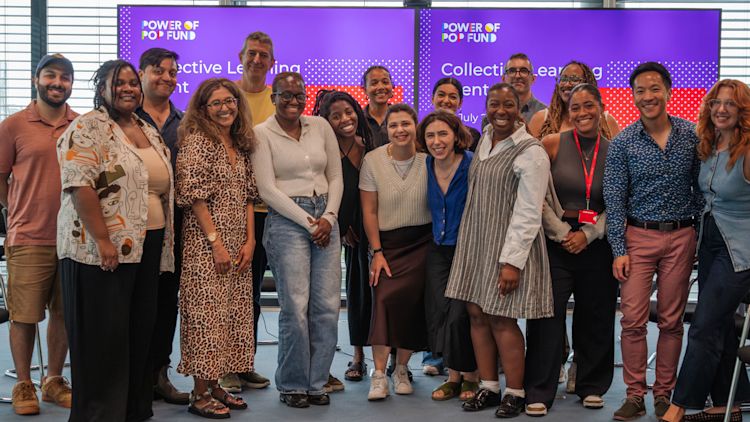Not there yet: A funder’s experience of supporting feminist movements
By Anya Stern
Back in the before times, we launched Power Up – a programme of financial support and collective learning focussing on power and how to fund feminist movements well. With 17 partners based in the UK, Sub-Saharan Africa and South Asia, we set off wide-eyed, with great enthusiasm, patched together experience, and certainty only that we’d have to adapt along the way.
Our early plans centred on having a global convening early in the process. With visions of meetings I’d attended in my mind, I thought about the tentative first introductions of groups who may recognise each other’s names at most, alongside a few hugs from those who knew each other. Amongst the women, there would be a few who we would know too – from assessments or previous work together – but as a group, we would be forming for the first time. I imagined earnest discussions that began with polite agreement and then grew looser and louder as the days went on and we got to know each other and moved beyond the clear common ground. We would work hard, staying up late and getting up early to think about theories of change, understandings of power, what the differences were between women’s rights’ and feminist work and what does looking at alternatives to custody for women in England have to do with early forced marriage in India? By the end, we would have more unanswered questions than we came with. But, we’d leave with new friends, faces to go with all the names, and perhaps – if we were lucky – a learning framework we could work within together for the rest of the programme.
We’re now about two and a half years into the grants, and of course we never met up. But, through a pandemic, a plague and political unrest, people have managed to continue not only the life-saving and transformational work they committed to, but we have continued our endeavour to learn, report, and share in a different way. Though of course, we’re not there yet.
When we first awarded these grants, we sent our reworked annual report template to funded partners. With the programme objectives in mind, we tried to provide space to capture the long-term change partners were working towards; their learning goals; what data they’d use, how they would use this to adapt; what success might look like and why it was important; and who else was working towards their goal. We wanted to understand how people worked as part of a ‘movement’, and how they thought about ‘power’. On the whole, we failed.
We had included the usual monitoring form trappings of beneficiary tables and activity plans, and although we encouraged groups to leave them empty if not applicable, it betrayed the embedded nature of ‘project thinking’ from both our – and their – perspectives.
It didn’t take us long to realise the forms weren’t working, but we ran out of time to look at them again before the annual reports were due. So, in the spirit of coming together and our ambition for the programme to be collectively run and designed, we held a workshop with representatives from nearly all the partners to talk through what we – and they – felt wasn’t working, and we committed to changing them before the year two reports had to be submitted.
We did amend the forms, and having received them in late 2021 (at a time when life again, got in the way of us having the focus we’d have liked), we got together again. This time it wasn’t to plan more changes, but to respond to what we’d heard still wasn’t (and what was) working. Part of what we’ve been doing with this programme is intentionally having an accountability to those we fund, and through them, to those most affected by the issues at hand. We knew we’d never find a perfect solution, but what we could – and can do – is acknowledge their experiences, and explain why we’ve made the decisions we have.
You can read a detailed report here(opens in new window) on the changes we made and the partners’ experiences of using these, as well as reading here(opens in new window) about the themes that emerged from their work.


